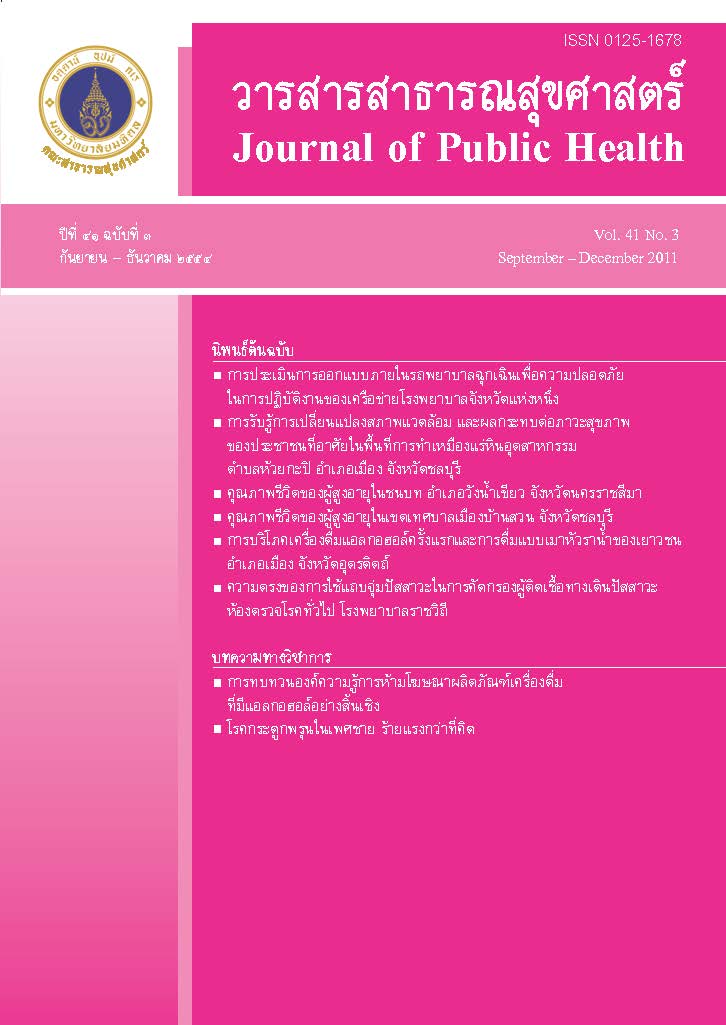Does Thailand Need Its Own Mathematical Model of the Influenza A (H1N1-2009) Pandemic and the Following Seasonal Influenza?
Keywords:
mathematical model, pandemic, influenza, seasonal influenza, vaccine, แบบจำลองทางคณิตศาสตร์, การระบาดใหญ่, ไข้หวัดใหญ่, ไข้หวัดฤดูกาล, วัคซีนAbstract
ABSTRACT
There are a number of mathematical modelling studies that consider optimum pandemic influenza vaccine allocation strategies and the potential impact of different vaccination strategies for seasonal influenza in affluent and/or temperate countries. The evaluation of these vaccination policies through mathematical models before their implementation is important because it helps to ensure the most efficient allocation of resources in order to minimize influenza burden. However, there have been no published mathematical modelling studies about vaccine strategies taking into account the fact that many countries are likely to only have limited vaccine supplies even in the long-term (i.e. lower and middle income countries). Moreover, none of these modelling studies have taken into account the pattern of seasonality of influenza transmission in the tropics. Because of these and other factors, there is a need to evaluate influenza vaccination strategies in light of the unique conditions faced in Thailand. This article also presents a framework for mathematical model development for pandemic and seasonal influenza in Thailand.
Key words: mathematical model, pandemic, influenza, seasonal influenza, vaccine
Downloads
Issue
Section
License
Creative Commons License CC-BY-ND


